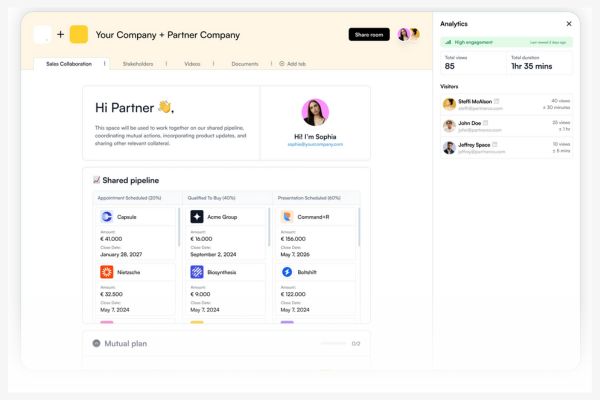Essential security scans and remediation advice for organisations
Learn how to protect your organisation with essential vulnerability scans and effective advice for remediating vulnerabilities.

Manoj Korekka
16th December 2024
This blog explores key elements of a strong cyber security strategy, focusing on essential security scans and effective vulnerability fixes. It provides actionable insights to help decision-makers strengthen their organisation’s security.
Vulnerability scanning
A proactive cyber security approach starts with identifying vulnerabilities. Security scans are essential tools that check systems, networks, and applications for weaknesses. Early detection helps organisations address threats before they grow, ensuring smooth operations.
Vulnerability scanning
Vulnerability scanning serves as the cornerstone of an effective cyber security strategy. Utilising automated tools such as Nessus, Qualys, and OpenVAS enables organisations to identify outdated software, unpatched vulnerabilities, and other common security flaws. Regular vulnerability scans are essential for the timely detection of issues, significantly reducing the risk of exploitation.
Importance of regular scanning
Regular vulnerability scanning is crucial for several reasons:
- Timeliness – Cyber threats evolve rapidly; therefore, frequent scans help identify new vulnerabilities that may arise due to software updates or changes in the IT environment.
- Compliance – Many regulatory frameworks require regular vulnerability assessments as part of their compliance mandates.
- Resource allocation – By identifying vulnerabilities early, organisations can allocate resources more effectively to address the most pressing issues.
Network scanning
Understanding network topology is vital for establishing a secure environment. Network scans assess open ports, active services, and unauthorised devices within the network. By identifying potential entry points, these scans provide critical intelligence necessary for reinforcing the organisation’s digital perimeter.
Benefits of network scanning
- Visibility – Network scanning provides visibility into all devices connected to the network, helping to identify rogue devices that could pose a risk.
- Configuration management – Regular scans help ensure that network configurations align with best practices and security policies.
- Threat detection – Identifying unusual patterns or unauthorised access attempts can help detect potential intrusions early.
Web application scanning
Given their susceptibility to cyber attacks, web applications require particular attention. Automated web application scanning tools simulate attack methods to identify vulnerabilities such as SQL injection and cross-site scripting (XSS). Addressing these weaknesses is crucial for safeguarding sensitive data and ensuring the integrity of digital interactions.
Key considerations for web application security
Dynamic testing – Implementing dynamic application security testing (DAST) allows organisations to test applications while they are running, providing real-time insights into vulnerabilities.
Static analysis – Complementing DAST with static application security testing (SAST) can help identify vulnerabilities in the code before deployment.
Continuous Integration/Continuous Deployment (CI/CD) – Integrating security testing into CI/CD pipelines ensures that vulnerabilities are identified and addressed early in the development process.
Configuration scanning
Misconfigurations pose significant cyber security risks often stemming from human error. Configuration scans validate that system settings comply with industry best practices and regulatory standards, effectively closing gaps that could be exploited by cyber criminals..
The role of configuration management
Standardisation – Establishing standard configurations across systems reduces variability and minimises potential misconfigurations.
Automated remediation – Tools that automatically correct misconfigurations can significantly enhance security posture by ensuring compliance with established standards.
Audit trails – Maintaining logs of configuration changes helps in tracking alterations and understanding their impact on security.
Compliance scanning
Adhering to regulatory standards such as GDPR, HIPAA, and PCI DSS is essential for avoiding penalties and protecting organisational reputation. Compliance scans confirm that practices align with these regulations, creating a solid legal and operational framework.
Reputation management – Non-compliance lead to reputational damage; thus maintaining compliance is crucial for customer trust.
Financial implications – Regulatory fines can be substantial; therefore, investing in compliance scanning can save organisations from costly penalties.
Operational efficiency – Compliance frameworks often provide structured guidance on best practices for cybersecurity management.
Vulnerability remediation
Identifying vulnerabilities is merely the first step in a comprehensive cyber security strategy; the real challenge lies in efficiently addressing these weaknesses while minimising operational disruption. Below is a strategic framework designed to guide executives through the remediation process.
Establish a comprehensive vulnerability management programme
Developing an effective vulnerability management programme encompasses discovery, risk assessment, prioritisation, remediation planning, and continuous monitoring. Clearly defined roles and responsibilities foster accountability across departments.
Components of an effective programme
- Discovery phase – Regularly conduct scans to identify new vulnerabilities.
- Risk assessment – Evaluate the potential impact of identified vulnerabilities on business operations.
- Prioritisation framework – Develop criteria for prioritising remediation efforts based on risk levels.
Building strong cyber security is an ongoing effort. As threats evolve, organisations must stay agile by using regular security scans and integrating vulnerability fixes into their plans. This strengthens your IT estate and builds lasting trust with customers and stakeholders.
If you want an ally in vulnerability management capable of delivering all the essentials we’ve listed and more, a service that watches over your IT estate 24/7, then learn more about SmartScan service.



